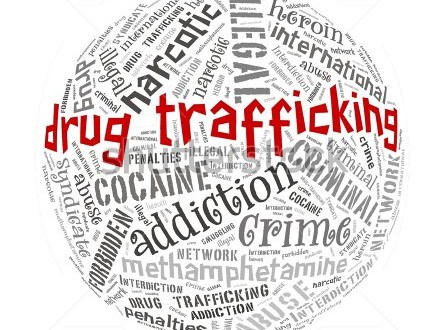For many years people who lived in the Amazon Rainforest have eaten coca leaves to get a high feeling. According to European scientist’s cocaine came in the 1850’s from coca leaves. Once known as a medical drug that did miracles is now recognized as one of the most addictive drugs in the world. One of the oldest plants in South America is the coca plant. According to botanists the coca plant cultivated in the Amazon Rainforest and spread through the Andres mountains. The people of South America have eaten the coca leaf for hundreds of years. The coca leaf is also included in the Inca culture and its religious traditions. (history.gov) As a drug in the streets Cocaine looks like a white powder with crystals in it. Drug dealers usually mix cocaine with other things like cornstarch, baby powder, or flour to rise their profits. (drugabuse.gov)
Cocaine is the second most abused illegal drug in the United States after marijuana. According to CBS news about 15 percent of Americans have used coke and 6 percent of 12th graders have gotten high from using the drug. (cbsnews) In 1859 Cocaine was removed from coca leaves by Albert Nieman who is a chemist from Germany. In the 1880’s it started to get popular in the medical society. Sigmund Freud an Austrian psychoanalyst used the drug and he was the first one to promote cocaine as simulant to heal depression and sexual dysfunction. In 1886 he put out an article called “Uber Coca” which supported cocaine benefits and he called it a miracle substance. Freud used cocaine on a regular basis, and he prescribed it to his girlfriend and one of his best friends and he suggested it be used for general purpose. He believed it takes a very large dose of cocaine for it to be toxic and that there is no dose that is lethal. (drugfreeworld)
In 1886 John Pemberton used coca leaves in Coca Cola and the drug’s popularity increased from that. The effects of euphoria and the energizing feeling on the buyer helped to increase Coca cola’s popularity as a soft drink. (drugfreeworld) At first coca cola was sold only at soda fountains that were segregated by race and then it became popular with middle class white people. In 1899 Coca cola started being sold in bottles and minorities that were lower class had ways to approach cocaine infused drug. In 1903 the company eliminated from its services. The move happened because of racial bias incidents and health issues. (history.com)
From the 1850s to the beginning of the 1900’s cocaine, opium, tonics, and wine were highly used by people around the world. Thomas Edison and actor Sarah Berhardt were two famous individuals who promoted the amazing effects of cocaine tonics. The drug was popular in the movie industry in Hollywood and there were messages coming out that were pro-cocaine use and it influenced millions of people. Cocaine use in the community expanded and it started becoming visible that the drug was dangerous. The pressure from the public forced the company of Coca cola eliminate the cocaine from the soda in 1903. By 1905 snorting cocaine became popular and in 5 years hospitals and medical books started reporting situations of nasal injuries that resulted from using the drug. In 1912 it was reported by the United States government that there were 5000 deaths from Cocaine use in one year and in 1922 the drug was banned. (drugfreeworld)
The Narcotic Act of 1914 was established by Francis Burton Harrison, who was a representative of New York to ban access to cocaine and coca leaves except if it was used for medicinal purposes. The establishment of pharmaceutical amphetamines postponed the non-medicinal use of cocaine in the 1930s. The Controlled Substance Act of 1970 regulated the production of pharmaceutical amphetamines, which decreased their availability significantly. The use of cocaine began rising during that time and the rise increased when crack cocaine started being used in the 1980s. (MethOIDE)
Crack started to become popular in the 1980s and many people were using it. From 1985 to 1989 there were 4.2 people who used cocaine and the number jumped up to 5.8 million. During that time crime started to increase in large cities. According to the Bureau of Justice statistic crack use caused 32 percent of homicides that took place and 60 percent of drug associated homicides in New York City in 1988. There were concerns by the public over illegal drug use during the 1980s and tensions started rising as the world entered the “crack epidemic” (History.com)
The Anti-Drug Abuse of 186 established penalties for criminals for the amounts of crack and cocaine they had. For possession of crack cocaine there was a five-year prison sentence. The same penalty was given for having 1 gram of crack cocaine and for 100 grams of powdered cocaine. There were individuals who disagreed with the law and thought it was racist since most users of crack are African Americans. The Fair Sentencing Act of 2010 responded to these criticisms and they lowered the weight rate between crack and powdered cocaine from 100:1 to 18:1 and removed the 5-year prison sentence for possessing crack. (History.com)
References:
http://www.history.com/topics/history-of-cocaine
https://www.drugabuse.gov/publications/drugfacts/cocaine
https://www.cbsnews.com/pictures/cocaine-a-brief-history-of-blow/5/
http://www.drugfreeworld.org/drugfacts/cocaine/a-short-history.html
http://methoide.fcm.arizona.edu/infocenter/index.cfm?stid=168

